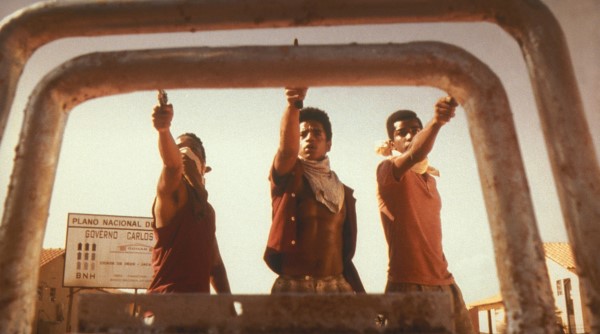City of God Review

I recently had the chance to revisit “City of God” with my movie club, and definitely undersold it with a lot of general statements in this review from fairly early in my film writing career – September 28, 2008.
The cycle of violence is not a subject filmmakers have ever shied away from. There are plenty of films like “City of God” that try and show such gratuitous violence that we almost become desensitized to it, we expect it. However, there is no film like “City of God” that tells this kind of story in rich, visual detail using some very compelling visual storytelling techniques.
The film follows a narration and chapters structure, often going back in time to explain the events of the present via the film’s narrator, the main character named Rocket, a boy from Cidade de Deus, a slum project in Rio de Janeiro. Rocket has many friends and acquaintances tied to the drug trade and/or people who steal and sometimes kill. While he doesn’t do it himself, he’s close enough to give us the story of those who do and explain how it has affected his life.
The film starts off showing how in the ’60s it all began with petty crime to make money and how that escalated into some bigger crimes that had serious consequences. It shows us specifically how one character, Lil Dice, changed everything with his violent ways. Directors Fernando Meirelles and Katia Lund give us these little explanatory stories in chapter form with actually text titles to make it clear. With so many names and characters to remember, doing this with Rocket’s narration is key to making this an accessible film.
In the ’70s, it’s now Lil Ze (Dice’s new name) that rules the streets. Where the only option to making money is to work your way up Ze’s chain as he owns every drug ring in the area. It’s a life of incredible violence in which all of Cidade De Deus’ children believe that crime and dealing is the only way to make money.
But while we see all these corrupted characters, we lose sight of how Rocket, an aspiring photographer, has managed to stay out of it, proof that it doesn’t have to be that way, although the prospects for change look grim.
What really makes this film different is Meirelles and Lund’s work visually with lighting, color, a variety of non-traditional camera techniques. There is no element of traditional drama. All the scenes are particularly short or time passes rapidly in them. They are snapshot images meant to show us as many characters and lives as possible. While violence, drug-dealing and life in a poor area are not new subject matters, its the directing work that makes this film stand out as one of the best ways of doing such a film.




0 Comments
You can be the first one to leave a comment.